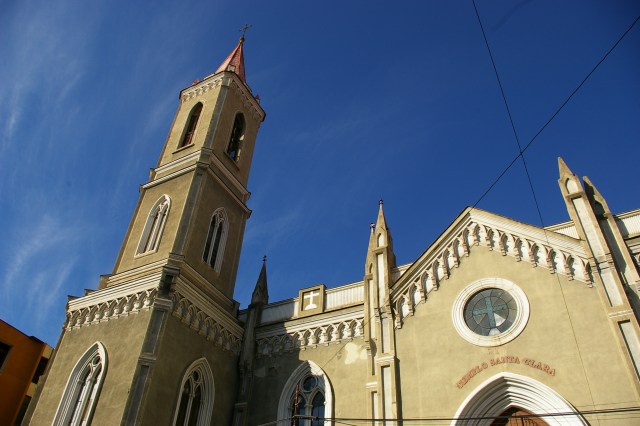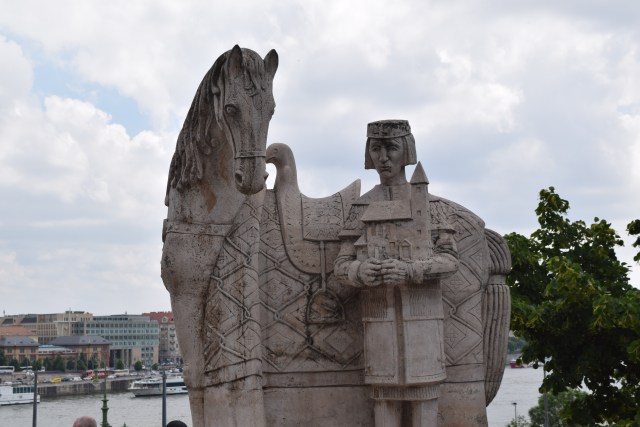Rome is a beautiful city with a fascinating history, interesting culture, and wonderful food. During our two week visit to Italy, we spent three full days in Rome, which was just enough time to see some of the most important sites within the city. We stayed at a boutique hotel that was right on the Piazza Navona, which gave us a central location to explore the city. Since we only had three days in Rome, we made sure to see as much as we could, but we also kept it at a casual pace with plenty of time to relax and people watch on the many restaurant patios. These were the top highlights for our visit to Rome in no particular order.

- The Colosseum – This is obviously one of the most recognizable locations in Rome and certainly not something to be missed. We visited during the off-season, in February, and even then the crowds can be quite large and lines can be long. There will be many tour guides outside of the Colosseum offering to take you on a tour and allowing you to jump into a shorter line.

Walking the Museum Halls - Vatican Museums – The Vatican Museums house thousands of works of art that have been collected throughout the centuries. There is too much to see in a single visit and we had to choose between focusing on sculptures or paintings during our tour of the museums. The final stop of any tour of the galleries is to see the interior of the Sistine Chapel. Often you don’t get a lot of time in the chapel because of the large crowds and long lines, but we were fortunate to get to spend as long as we wanted.

Marble Floors and the Interior of the Pantheon - The Pantheon – Surrounded by the streets of Rome, the Pantheon is a fascinating piece of history in the heart of the city. The exterior of the Pantheon reveals its true age and classical architecture, but the interior looks like it could have been built recently. The interior of the dome is quite stunning and all of the marble floors, various statues, and beautiful artwork are worth making your way through the crowds to see.

Fountain of the Four Rivers and the Palace in Piazza Navona - Piazza Navona – We were fortunate to have our hotel located right on the Piazza Navona with amazing views from our room. The fountains are quite beautiful and during the day there will be artists and vendors selling items to the tourists as well as musicians playing a variety of music. Seeing the fountains at night when they are lit up is one of our favorite memories. Another reason to visit the Piazza Navona are all of the restaurants and cafes that are located in and around the piazza.

View of the Roman Forum from Above - The Roman Forum – Walking the paths of the Roman Forum might be our favorite memory of visiting Rome. We would recommend buying a bundled ticket that includes both the Colosseum as well as the Roman Forum. It would be a shame to visit Rome and not take the time to see the Roman Forum with the thousands of years of history and culture that it represents.

Inside of Saint Peter’s Basilica - Vatican City and Saint Peter’s Basilica – Obviously the Vatican Museums are wonderful to visit, especially with the inclusion of the Sistine Chapel, but just visiting Vatican City is worth it. There is something truly special about walking through Saint Peter’s Basilica and seeing the incredible artwork and architectural details. Stepping outside of the basilica and heading into Saint Peter’s Square is equally impressive with all of its historical significance.

The Columns and Statues of the Monument - Altare Della Patria – Located about halfway between the Colosseum and the Pantheon, visiting Altare Della Patria is worth visiting for several reasons. There is an observation deck on the roof that provides stunning views of the city as well as the Piazza Venezia, which is across the busy street from the building. There are the statues of the chariots and horses that can be seen from throughout the city. It is also the location of the Tomb of the Unknown Soldier. As with much of Rome, there are also many choices of restaurants in the area.

Trevi Fountain in Rome - Trevi Fountain – This might be the second most photographed location in Rome with its beautiful statues, flowing waters, and iconic scenes from the movies. Legend has it that if you toss a coin over your left shoulder that your dreams will come true. Money is collected from the fountain and used to provide food for the less fortunate, so even if your dreams don’t come true, you’ve done a good deed. It is a wonderful place to sit and take in the beautiful scenery and enjoy a sunny afternoon.

City Views of Rome
Regardless of how many days that you have or the time of year that you visit, all of these locations should be on your itinerary. It is difficult seeing a city with a history and culture as diverse as Rome’s in such a short amount of time, but if you relax and walk the streets to visit each of these locations, you will certainly go home with incredible memories. We certainly treasure the time that we spent in Rome and in Italy in general.




















































